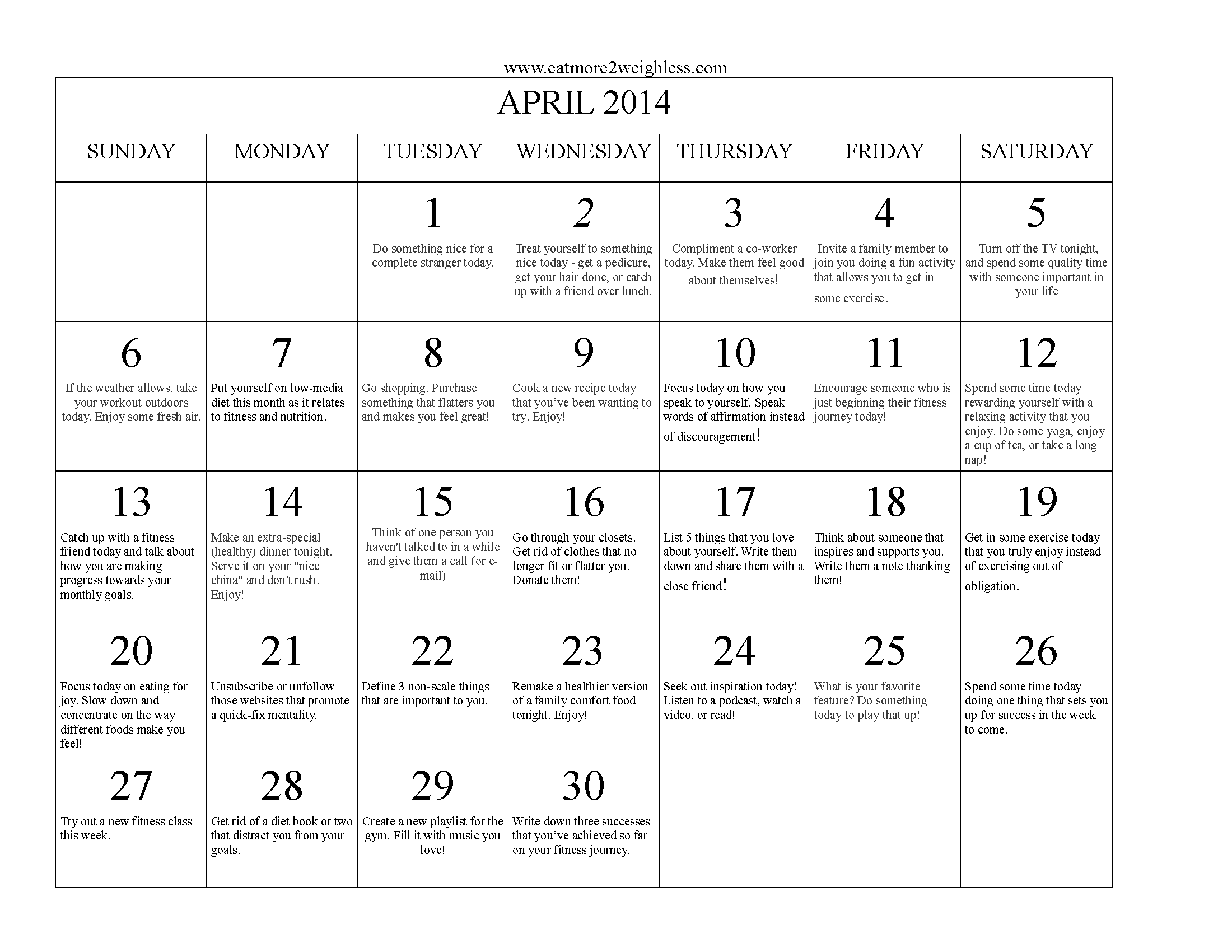
by | Mar 28, 2014 | Consistency, Life Application: Monthly Calendars
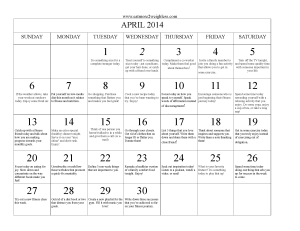
Click to enlarge
Spring is finally here! After a long winter of being cooped up indoors, most of us are ready to take some of our workouts outdoors, get out the shorts and tanks, and work in our gardens.
Often, the warmer weather means that we are inundated with a whole new wave of messages telling us to resort to quick fixes that are sure to get us into bikini-ready shape in no time at all!
We’re here to combat the quick-fix mentality by encouraging you to incorporate more positive thinking this month. You’ve been working hard on your goals all year. Rather than resort to crash diets and quick fixes, continue to stay the course and trust the process. Consistency always wins, and when everyone else is regaining the weight they’ve lost from quick-fix diets, you’ll be celebrating your success.
You may consider looking at the messages that you’re allowing to come into your life regarding fitness and nutrition. Do you subscribe to a lot of diet and exercise advice on Facebook, Twitter, or Instagram? Too much information and a million different opinions about the best course of action to guarantee results can literally drive you crazy. It may be worth it to evaluate if the messages you’re getting are encouraging you or causing negativity and confusion to creep in. Surround yourself with people and messages that encourage you to be consistent, nurture yourself, and celebrate the successes you experience along the way. Do you honestly need to be constantly surrounded with messages telling you to eat clean, kill your workouts, and think of nothing else but nutrition and fitness? Especially if you’re already stressed about — or doubting — the process? You’ll likely discover that thinking about your fitness goals a little less can go a long way in helping you to enjoy the journey and let go of some of the stress that can be more of a hindrance than a help to your success.
We look forward to hearing about how you personalize this month’s #bestyearyet challenge and make it work for you!
 Becca is a busy wife and homeschooling mother to five children ages 5 to 13. About three years ago, she embarked on a journey to health and fitness that resulted in the loss of approximately 100 pounds. Today, she is a competitive powerlifter and strongwoman who loves ice cream and deadlifts. As an ISSA certified personal trainer, she is passionate about helping women to get started on a lifestyle of strength and fitness.
Becca is a busy wife and homeschooling mother to five children ages 5 to 13. About three years ago, she embarked on a journey to health and fitness that resulted in the loss of approximately 100 pounds. Today, she is a competitive powerlifter and strongwoman who loves ice cream and deadlifts. As an ISSA certified personal trainer, she is passionate about helping women to get started on a lifestyle of strength and fitness.
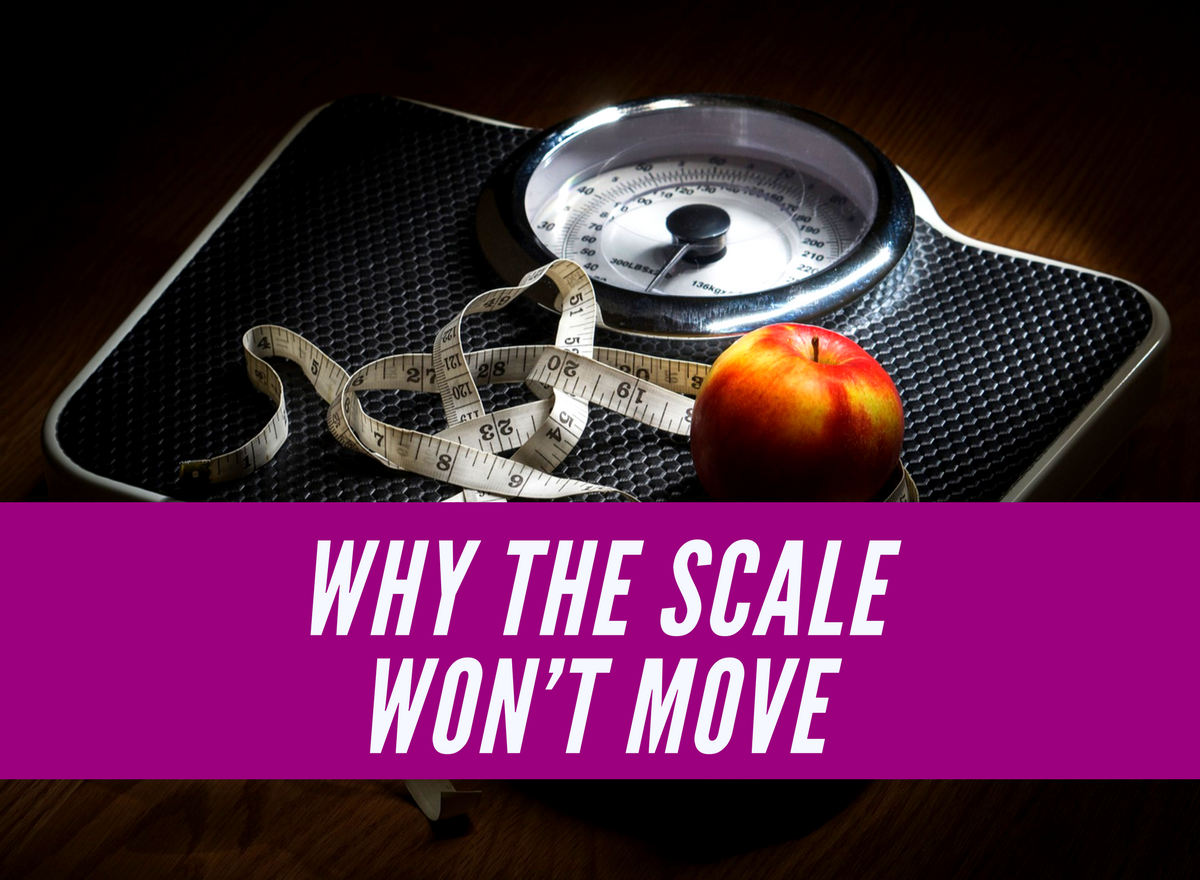
by EM2WL | Mar 26, 2014 | Fat Loss / Cutting
Ever wonder why it gets harder and harder to lose weight? Or why you’re finally doing it the right way, but the scale just won’t move?
Dieting… Why is it so hard?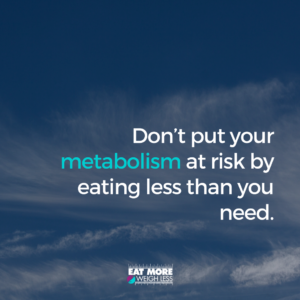
The more you diet, the less likely you are to lose weight – because you lose muscle and gain fat repeatedly — ultimately crashing your metabolism. Some studies have shown that for every 13 pounds lost on a traditional, low-calorie/high cardio diet, six pounds of muscle is lost. That’s almost HALF. In case you didn’t know:
Muscle = metabolism
This means that the more you lose, the slower your metabolism is. Then when (not if) you regain – you gain back FAT ONLY. Every time this process repeats, the fat percentage becomes higher than it was before, while muscle mass drops lower. So, even if you are the same weight you used to be, you’re technically “fatter.” If your weight is higher than it used to be, it begins to seem almost impossible to get the weight off. In some cases, it actually is impossible — if not futile — considering the loss of muscle mass and resulting metabolic crash.
After going through several diets, our goals must change. No matter how much you weigh – the goal (whether you realize it or not – your body does) becomes to “bulk” and build muscle to replace what was lost. Even if you ignore this fact, and attempt to start cutting the right way (eating a proper amount of calories and including some lifting) – your body still wants and needs to do this. When weight training during dieting – even if you’re in a deficit – you WILL gain muscle to replace what was lost. This means that you could sit at an extreme standstill on the scale, until your body has replaced every.morsel.lost… Remember that the scale does not tell the whole story.
Some women may only lose four pounds, yet drop two jean sizes; others may gain several pounds, and drop the same amount on the jeans. Although this is a more than nerve-wrecking experience, STAY.THE.COURSE. Because your only alternative, is to repeat the above course of action – and end right back at square one…gaining MORE fat.
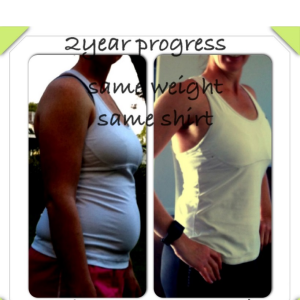
Terrianne hadn’t seen any progress…based on the scale ;) ~Check out her story!~
Still not convinced? This study goes into extensive detail about how each diet leaves our body with less of the metabolism boosting muscle that we need. For those not interested in the 97 pages of details, here’s the meat: women will lose muscle naturally (23% in women between ages 30-70), if they do nothing to preserve it. Diet + cardio = muscle loss (68% fat, 22% muscle). Diet + LIFTING = 97% fat loss, and only 3% muscle loss. Big difference? We think so. When you truly grasp how the fat continually increases (while the muscle stays the same or lessens) between diets, you’ll understand how we diet all our lives, yet end up bigger. Doing it right is so hard to wrap our brains around, but I’d rather have 97% fat loss over 68%. How about you?
So…Is there any hope?
Many women hear of the harmful effects of the dreaded yo-yo diet and throw their hands up in frustration. They either decide that eating properly isn’t worth it, so they go back to overeating (drowning sorrows) or undereating (back to the diet comfort zone). With all this bad news, they feel despair over their hopeless metabolism, and reaching their fat loss goals.
There’s always hope!! You simply have to be JUST as patient with doing things the right way as you were with the quick fixes.
We’ve trained ourselves to have much more faith in doing whatever it takes when the process is quick. Yet our faith wavers when doing the right thing takes “too long.” It really becomes about not looking for the same measures of success that you have in the past, and not putting yourself on those same timetables. Something is always happening, but the amount of patience that we have, and stress that we put ourselves through will come into play. I tell clients that taking on fat loss in the right way – after years of doing it the wrong way – is like going to college. Every time you doubt the process and change something up (unnecessarily) it’s like changing your major mid semester — you add more time to your journey. More time is lost in this process due to the wavering of trust, than to the actual length of time it may have taken with a tad consistency. Add stress/cortisol to the mix, and it’s like taking a full semester (or two…or three) off. Stressing about your journey, and changing things up constantly to make things happen more quickly, usually hurts more than it helps. It never makes them actually happen more quickly (you either stand still or head backwards). Stay the course. Again – it’s tough, but the alternative is worse.
But what if you can’t lift?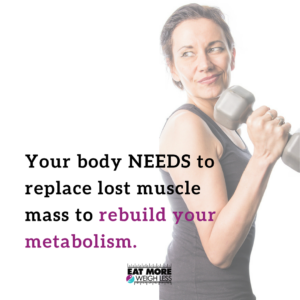
Some clients feel hopeless because they have limitations that keep them from being able to lift heavy enough. We are not talking mindset limitations, like “I’m too old/young/fat/skinny, etc…” Those would be considered excuses, not limitations. But others of us may have actual physical limitations, or injuries (permanent or temporary) and doctors orders to not do certain movements. If this is you, you have to work with what you have. Not everyone can lift heavy. Heck, I (Kiki) couldn’t for the past year, due to injury. If the situation is temporary, then keep your protein in check, allow yourself to fully heal, and get back to it when you can. All you can do is the best you can do. Don’t put yourself at risk by taking on more than you can, and don’t put your metabolism at risk by eating less than you need. The healing process is worth it in the end. You’ll be able to lift soon enough (although I personally know how hard it is to wait).
If the situation is permanent, then much of the above still applies. Finding ways to add resistance that works for you will be your key. Just find ways of putting as much resistance on the muscle as you can to maintain what you do have. Feel free to contact us if you need help, putting together a personalized plan for your circumstances.
Feel like you’ll NEVER see changes?
Sometimes it’s really hard to see changes in ourselves that are so obvious to others. My husband, family and friends always see changes in me before I “allow” myself to. My first instinct is to deny that anything is happening until he says it about three to four times…or until someone else says it. Remind yourself to take compliments at face value. Most people have nothing to gain by telling you that “you look amazing” or “like you’ve lost tons of weight.” Instead of saying “no I haven’t” followed by some negative retort (because of your own inner scale struggle), train your mind to just accept that they likely see something that you haven’t allowed yourself to see yet. Take a few moments to allow the compliment to sink in — and remind yourself of it every time you cross paths with a mirror, until the next compliment rolls in (or you find a new one to give yourself).
Learn to see yourself as (or better than!) others do, rather than constantly being your own worst critic.
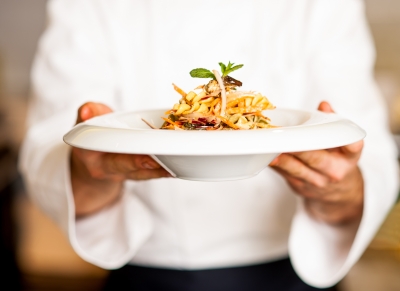
by Trish Adams | Mar 20, 2014 | Fat Loss / Cutting, Nutrition, Stress
Several years ago when I decided I wanted to live a healthier lifestyle, I thought of all the things I would change. Things like never eating sugar, actually anything white got the axe, except for egg whites and cauliflower. I subscribed to Clean Eating magazine and vowed that I would cook all my meals and never step foot in my company cafeteria again. For the most part, I decided eating out basically had no place in my new lifestyle.
Eventually I stopped going out to eat altogether or, when I did, I smuggled in my own food. Yep, I brought my Rubbermaid to restaurants. I even started turning my nose up at going to dinner at friends’ homes. After all, they didn’t eat like I did, or heaven forbid, steam their vegetables.
 Looking back, you might say I was a bit neurotic and I would wholeheartedly agree. The truth is, I was trying to control every aspect of my diet, but it was a joy-sucking chore and the worst part was that it was unnecessary. I tried to control every element of my diet and it was depressing.
Looking back, you might say I was a bit neurotic and I would wholeheartedly agree. The truth is, I was trying to control every aspect of my diet, but it was a joy-sucking chore and the worst part was that it was unnecessary. I tried to control every element of my diet and it was depressing.
Oh, I felt accomplished, but now I realize that I really was deprived. I missed out on sharing good times and meals with friends and family and even potential professional opportunities as I especially steered clear of work outings. I must admit, I’m still not too fond of the office cafeteria, but when the odds of you getting food poisoning aren’t in your favor, you would be too.
When you decide that you’re going to adopt a healthier lifestyle, you may think you need to forgo eating out, because staying at home gives you more control over what you eat.
But dining out is about so much more than just the food. Don’t miss out on socializing with friends, panicking over what to eat when you’re traveling or just enjoying a night off from cooking.
Pull up a chair. Take a taste. Come join us. Life is so endlessly delicious.
― Ruth Reichl
Stress free eating out is enjoyable, and with a few tips, it becomes no big deal.
Plan ahead

Save room for the good stuff!
When dining at a new restaurant, go online to check out the menu. This will help set you up for success. Knowing what you’re going to eat when you walk in the door or having narrowed down the selection to a few choices ensures that you have thought through your meal and it will be more balanced than, say if you just ate on a whim. Figure out where your protein, fat and carbs will come from. If there’s a dessert that you really want to try, you’ll know not to dive into the bread basket or load up on a side of mash.
Mind Your Portions and Macros
If you are an avid calorie counter and tend to weigh your food regularly, you probably have a good sense of what your portion sizes are. This can get a bit trickier as you move away from calorie counting, but it’s nothing to worry about. Take notice of the portion size of food you eat when at home and simply eat to the same scale when eating out and take the rest home for lunch the next day.
For the intuitive eater, you probably already have a system in place for managing your portion sizes and macros. As a general rule I eat about 1-1/2 palm size of protein, ½ palm of fat, a fist of starchy carbs and as many veggies as I want. This can be adjusted depending on current goals, but in general, this is what I do. Over time this just becomes a habit and pretty much effortless whether eating at home or away. It’s also portable!
Another great tip whether eating at home or out on the town is to eat your food slowly. It takes about 20 minutes for your brain to send out satiety signals. Slowing down your eating will allow you to stop eating before getting over full. Plus, if you’re enjoying a splurge, why not savor each and every bite?

Chicken Tikka Masala – Yummm!
Watch Out for Sneaky Calories
What sounds like a pretty healthy meal can actually turn out to be a calorie bomb. Stay on the lookout for dishes that have sauces or are creamed, crispy, breaded…you get the idea. Not that you have to steer clear all the time, but know what you are eating. Of course beverages like soda, juices, lemonades, etc., unless they have a sugar substitute, are usually packed with calories as well and probably should be avoided in general. Opt for sparkling water or unsweetened tea instead.
Eating Out Mindfully and Stress-free
To sum things up, if you eat out regularly or travel a lot, aim to eat a bit closer to what you would normally eat at home most of the time. Over indulging on the regular won’t help you reach your goals and will probably just lead to a lot of frustration.
If you eat out a bit less frequently and want to splurge, go for it. If you happen to be going to the restaurant that makes the best vodka sauce in town, enjoy! I am a sucker for chicken tikka masala and make a point to get to my favorite Indian restaurant every now and again. It is definitely a splurge as not only do I eat the tikka masala, but I sop up the sauce with naan as well!
A splurge once in a while will have minimal impact on your progress when looking at the bigger picture, but may do wonders for your soul! Don’t miss out on the simple yet fulfilling things by limiting your diet to only what is prepared by you. Get out and enjoy life!
Photo credit: stockimages, kimberlykv, preppybyday

by Trish Adams | Mar 14, 2014 | Fat Loss / Cutting, Nutrition, TDEE/BMR, Troubleshooting
With the onset of your cut, it’s important to remember that it is just another phase of your fitness journey. Another step along a journey of many steps. As fat starts to shed it may be tempting to stay in this phase for the fat loss benefits. But rest assured, you’ll find that over time if you cut too long or too deep, it will work against you rather than in your favor. So, what to do? Cue the diet break.
As the name suggests, a diet break is just that, a break from your diet and a return to maintenance or eating at TDEE. Diet breaks can come in several forms, from simply a cheat meal or a refeed day to a full diet break which can last for a couple of weeks.
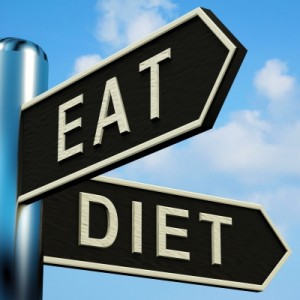 WHY ARE DIET BREAKS NECESSARY
WHY ARE DIET BREAKS NECESSARY
During your cut phase, cals are adjusted slightly below TDEE with a 5-15% deficit. When cals are reduced, your metabolic rate slows to accommodate the decreased intake. Similarly when fat loss or weight loss occurs, your metabolic rate can also be impacted. This slowing of the metabolic rate can, in turn, slow your fat loss. Quite the vicious cycle, I know. To add further insult to injury, if you stay too long in a deficit, your body will start to adjust and think your deficit is actually your new maintenance. When fat loss stalls you may instinctively want to decrease calories further, however, this could potentially do more harm than good. By taking a diet break, you help return your metabolic rate to normal as well as your hormone levels, all of which will aid the fat loss process once you return to eating at cut. Additionally, a diet break can also serve as a psychological break if you struggle with sticking with your plan.
WHEN TO TAKE A DIET BREAK
Diet breaks should be planned anywhere from 4-12 weeks of your cut phase and should last for 1-2 weeks. If you have a vacation, special occasion or even a stressful time ahead, this would be the perfect time to write a diet break into your schedule. After all, if you’re vacationing you’ll probably want to kick back, loosen up the diet strings a bit and enjoy a little indulgence. Why fight it? The same can be said for times of stress. Scheduling a diet break might lessen the load slightly.
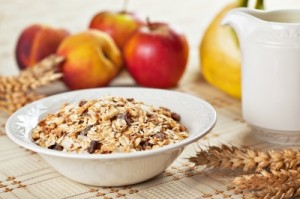 HOW TO DO A DIET BREAK
HOW TO DO A DIET BREAK
As already mentioned, a diet break is a return to maintenance calorie intake. If you’ve adjusted your macros during your cut, you’ll want to return these to maintenance levels as well. Carbs are generally the most manipulated macro during cut, so be sure to bring this back to normal. As usual, your protein shouldn’t change much and should be at least 1g/lb bodyweight. Although cut phases should never be overly restrictive, if you are cutting back on any foods or macro groups, this is a great time for a comeback! Now, a diet break should not be confused with a free for all or an excuse to visit your local all-you-can-eat buffet. Stick to your maintenance cals and macros and you’ll do fine.
BONUS

Interestingly you may find that as you increase your cals for your diet break you may experience a whoosh or drop on the scale. This whooshing affect may be the result of water being released from fat cells which previously stored fat. You may also find that during your cut phase you weren’t able to perform as well with some lifts due to the reduced cals and possibly lower carbs. If that was the case, you should find your strength return to normal during the diet break and return to maintenance cals and macros.
There are many reasons to incorporate planned diet breaks into your nutrition plan. From a physiological perspective, the full diet break is recommended as it allows your body to return to normal levels, which in turn can aid your fat loss efforts. From a psychological perspective, it’s just nice to return to maintenance eating for a little while. With that said, it is strongly recommended for anyone doing a cut phase to include a full diet break at least every 12 weeks, if not more frequently, into your plan. While it seems counter-intuitive, trust that it will work in your favor in the long run.
Photo credit: stuart miles, Serge Bertasias Photography, stockimages
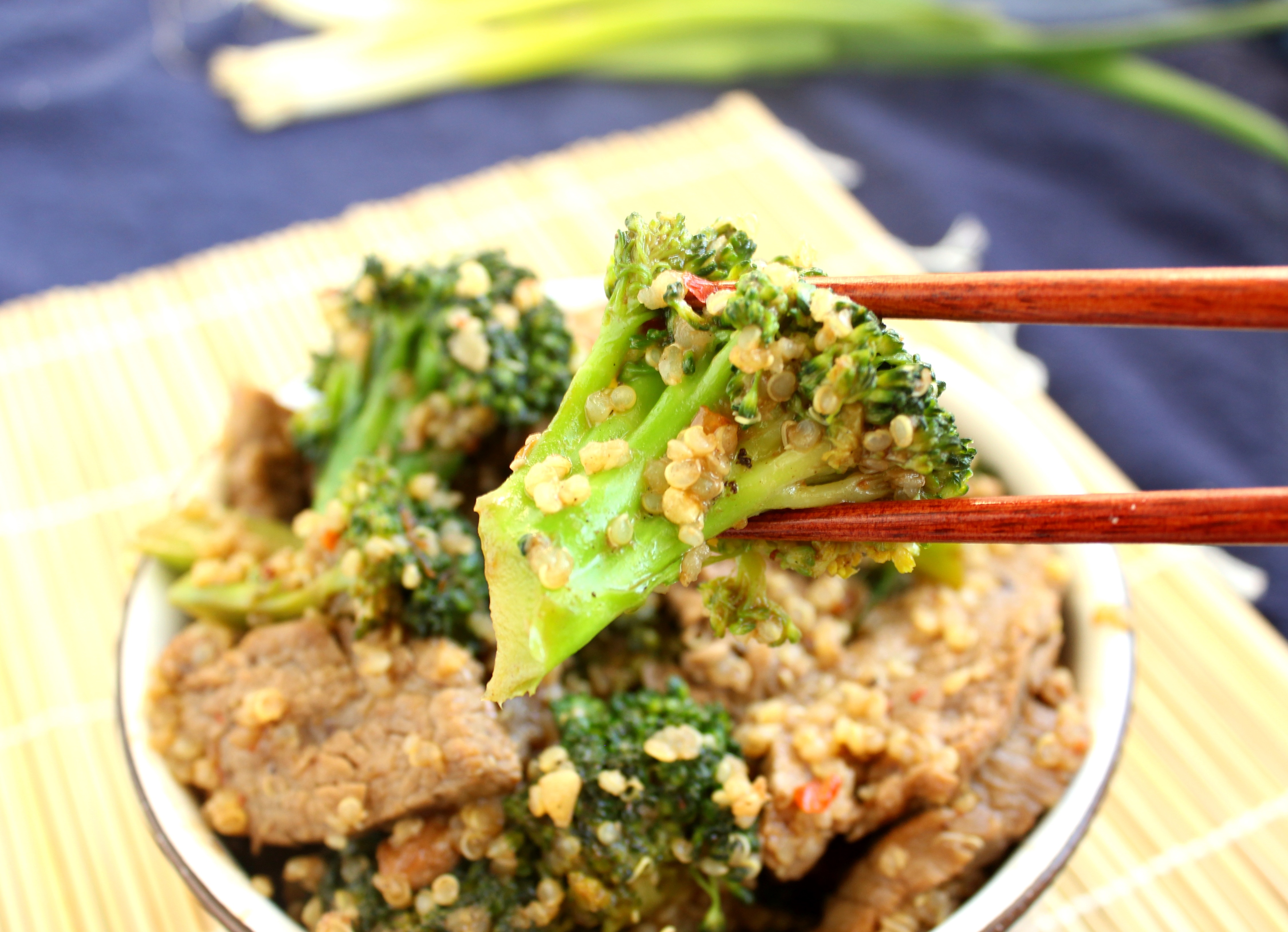
by Trish Adams | Mar 12, 2014 | Main Dish, Recipes
Team EM2WL would like to extend a warm welcome to our newest guest blogger, Kellie, from The Suburban Soapbox! Today Kellie shares a healthy and delicious stir-fry recipe the whole family will enjoy!
I’m so excited to be a guest blogger here at EM2WL! We share the same philosophy about food and understand that being healthy and losing weight doesn’t mean you need to sacrifice on flavor. I live to eat…I mean, I think about food constantly during the day…sort of obsessively so every move, every exercise, every step I take is so I can enjoy eating the things I love! But…I also believe everything is good in moderation and that’s why I, also, take some of my favorite recipes and make them a bit healthier. A little ying and yang of food, if you will.
Here is a family favorite in my house and a little story to go along with it. Thank you, Trish, for inviting me to be a part of your happy family here at EM2WL! I look forward to sharing more of my tasty favorites in the very near future!
 This is the easiest recipe I ever made. Originally made with the help of a bottled stir-fry sauce, one look at the sodium content and I knew I needed to make some modifications. And as much as I love white rice, quinoa is just a better option when you’re trying to pack in some nutrients.
This is the easiest recipe I ever made. Originally made with the help of a bottled stir-fry sauce, one look at the sodium content and I knew I needed to make some modifications. And as much as I love white rice, quinoa is just a better option when you’re trying to pack in some nutrients.
Plus…I really only love white rice that’s swimming in butter. Or in a sushi roll, but even then I could really just do without. It’s a thing with me…I know it’s weird.
You can cut the beef up in advance, as well as, the broccoli to save time. And leftover quinoa is definitely the way to go with this recipe. So, if you’re making something with quinoa for dinner earlier in the week…always make a little extra to throw into a stir-fry.
Another thing I did a little differently, I threw the quinoa into the stir-fry pan at the end. To get it a little crispy. And to make sure it was all mixed up with the other ingredients. Most places throw the mixture onto of the rice but I felt like that method left the quinoa too bland. Plus, I love that it gets all mixed into the broccoli florets
Leftovers keep well for lunch the next day. So you won’t need to hit up McDonald’s. Like I did today. (Yes, I regret my choices. Moving on.)
Beef, Broccoli and Quinoa Stir-Fry
A new take on an old favorite, this nutrient packed Beef Broccoli and Quinoa Stir-fry from www.TheSuburbanSoapBox.com will be a hit with the whole family!
Ingredients
- 4 tablespoons chili paste
- 1 teaspoon toasted sesame oil
- 1-1/2 cup cooked quinoa (I use Bob’s Red Mill)
- 3 tablespoons rice vinegar
- 3 tablespoons ginger (minced)
- 1/4 cup honey
- 1/4 cup low sodium soy sauce
- 1lb flank steak (cut across the grain into 2 inch x 1/4 inch pieces)
- 2 tablespoons cornstarch (I use Clabber Girl)
- salt and pepper
- 3 tablespoons canola oil
- 3 cups fresh broccoli (chopped)
- 3 cloves garlic (minced)
Directions
|
|
| In a large bowl, toss the steak with the cornstarch to coat and season lightly with salt and pepper. |
|
|
| In a small bowl, whisk together the honey, soy sauce, rice vinegar, chili paste and sesame oil. Set aside. |
|
|
| Heat 2 tablespoons of oil in a large wok, stir-fry pan or skillet over medium-high heat and add the steak to the pan. Working in batches if necessary, cook the steak until brown and no longer pink. Move the steak to the sides of the pan and add the broccoli. |
|
|
Cook the broccoli until bright green and then move to the sides of the pan with the steak. Add the remaining tablespoon of oil to the pan and add the ginger and garlic, cooking for 1 minute.
|
|
|
| Add the quinoa and cook for 2-3 minutes, stirring occasionally and then mix all the ingredients together in the pan. Add the sauce mixture and stir to combine thoroughly. Continue cooking for 2-3 minutes and then serve immediately. |
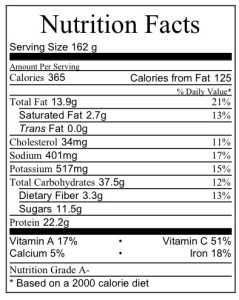

 Becca is a busy wife and homeschooling mother to five children ages 5 to 13. About three years ago, she embarked on a journey to health and fitness that resulted in the loss of approximately 100 pounds. Today, she is a competitive powerlifter and strongwoman who loves ice cream and deadlifts. As an ISSA certified personal trainer, she is passionate about helping women to get started on a lifestyle of strength and fitness.
Becca is a busy wife and homeschooling mother to five children ages 5 to 13. About three years ago, she embarked on a journey to health and fitness that resulted in the loss of approximately 100 pounds. Today, she is a competitive powerlifter and strongwoman who loves ice cream and deadlifts. As an ISSA certified personal trainer, she is passionate about helping women to get started on a lifestyle of strength and fitness.















 Print recipe
Print recipe

Recent Comments